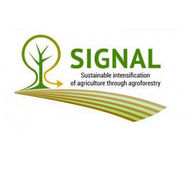Abundance, Diversity, and Function of Soil Microorganisms in Temperate Alley-Cropping Agroforestry Systems: A Review (2022)
Beule, L.; Vaupel, A.; Moran-Rodas, V.E. Abundance, Diversity, and Function of Soil Microorganisms in Temperate Alley-Cropping Agroforestry Systems: A Review. Microorganisms 2022, 10, 616.
Special Issue Plant and Soil-Associated Microbial Communities in Forest and Agricultural Ecosystems 2.0, (),
doi:https://doi.org/10.3390/microorganisms10030616
Abstract
Modern temperate alley-cropping systems combine rows of trees with rows of crops (agroforestry), which allows for diverse interspecific interactions such as the complementary and competitive use of resources. The complementary use of resources between trees and crops is considered the main advantage of these multifunctional land use systems over cropland monocultures. Moreover, several studies demonstrated that agroforestry systems are environmentally more sustainable than cropland monocultures. Over two decades of research on soil microorganisms in temperate alley-cropping systems are characterized by a variety of different methodological approaches and study designs to investigate the impact of agroforestry on the soil microbiome. Here, we review the available literature on the abundance, diversity, and functionality of soil microorganisms in temperate alley-cropping systems. Further, we identify current knowledge gaps as well as important experimental factors to consider in future studies. Overall, we found that temperate alley-cropping systems increase soil microbial abundance, diversity, and functions as compared to cropland monocultures, which is expected to contribute to enhanced biological soil fertility in these systems.

